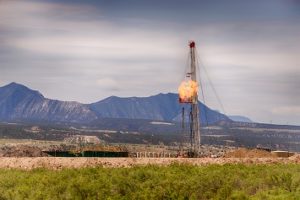According to a new safety hazard alert, there were 85 deaths between 2005 and 2015 at oil and gas (O&G) wellsites that were caused by fires or explosions. Of those, 27 deaths were directly related to flammable vapors from vehicles or motorized equipment.
The Occupational Safety and Health Administration (OSHA), the National Institute for Occupational Safety and Health (NIOSH), and the National Service, Transmission, Exploration, and Production Safety (STEPS) Network have jointly issued a hazard alert to help prevent such fatalities in the O&G industry.
Why Conduct a Fire-Risk Assessment
The first step to prevent fires or explosions is to conduct a fire-risk assessment. Vehicles and other motorized equipment are an ignition hazard if they are located too close to potential flammable vapor sources. Fire-risk assessments can help you establish priorities so that the most dangerous situations are addressed first, and those least likely to occur and least likely to cause major problems can be considered later. During a risk assessment, hazards are evaluated in terms of the likelihood that a problem may occur and the damage it might cause. By conducting a fire-risk assessment, you can ensure the safe positioning of all vehicles and motorized equipment during all wellsite operations.
Step 1: Choose your group.
The people involved in a fire-risk assessment should be knowledgeable about the area of the site and the equipment that is being assessed. In addition, each crew could analyze work areas for hazards. Other groups, like first responders, safety committee representatives, safety professionals, and supervisors, may be included. If many people are conducting analyses, each should be assigned to areas he or she knows well. The findings from various sources can be combined for a detailed site analysis.
Step 2: Include in training.
Training sessions are usually most effective when the audience is directly involved and participating. Conduct an exercise in which the group names all the possible fire hazards in their work areas and ranks each hazard as low, medium, or high risk. This will help your workers understand the most critical fire hazards and what they need to do to prevent a disaster.
Step 3: Identify potential sources.
At a wellsite, there are a number of potential sources for releases of flammable gases or vapors. Be sure to consider the wellbore, flowback tanks, frac tanks, and production tanks.
Step 4: Consider locations.
Evaluate the locations of the potential sources of releases as they relate to on-site ignition sources.
Step 5: Consider weather conditions.
Changing weather conditions, such as wind and temperature, can change the potential for the ignition of vapors from vehicles and motorized equipment.
Step 6: Include fire-risk hazards in JHA.
When developing job hazard analyses (JHAs) for particular jobs and tasks at the wellsite, always include fire-risk hazards.
Step 7: Never stop assessing fire risks.
The task of fire-risk assessment is an ongoing activity. Any time the work environment changes, such as the introduction of new equipment, update the risk assessment and reevaluate the priorities. A risk assessment is most useful if it is never considered finished. Instead, think of it as a draft document that must be updated as things change.
Now that you have assessed the fire risks from the ignition of vapors at your wellsite, what will you do with the information? Check tomorrow’s Advisor for some tips for preventing these fires and explosions and keeping your wellsite workers safe.

